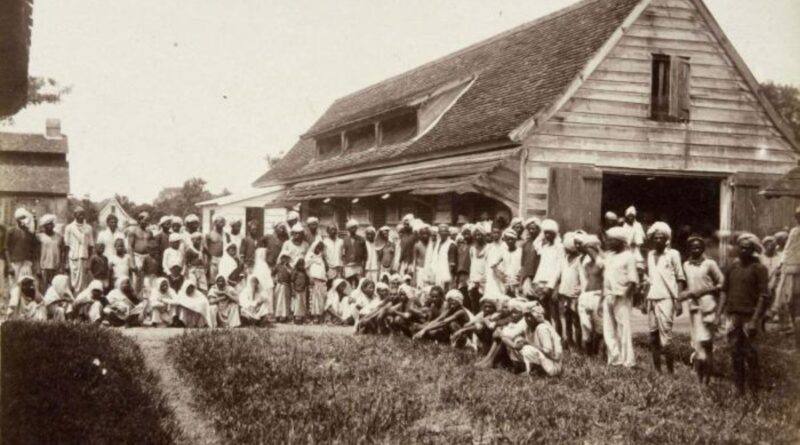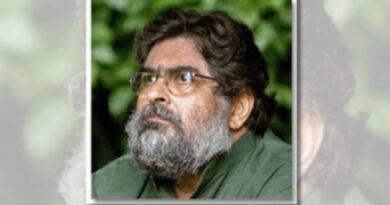Know The Amazing Story Of Forgotten Sarnami Indians
Part of the scattered indentured (labour) Indian diaspora, the tale of the Dutch-Hindustanis, often known as the Sarnami Hindustanis, is found in pockets of prominence not only in Europe but more importantly in the Caribbean Islands, Africa, and the South Pacific. It is complicated as well as fascinating. Communities such as East African British Indians, Indo-Trinidadian Americans, and Dutch-Hindustanis have another historical sharedality: they are “twice-migrants”. After either forcibly or otherwise migrating to their initial host nation, they choose to relocate once more to their present place of abode.
How therefore did these “Indians” get in the Netherlands?
Many Indians were shipped out from areas of the Indo-Gangetic plains – via Kolkata – to many plantation colonies including Suriname, British Guiana, French Guiana, Trinidad and Tobago, Jamaica, Fiji, Mauritius, and so on at the beginning of the system of indenture. The ships were veered to Suriname, a Dutch plantation colony in continental Latin America, during their turbulent voyage over the kala pani. Full of people, the ships—from the British colonists to the Dutch—were changing hands on journey. The local Indians on board, who journeyed in appalling conditions to begin their new life, were hardly of concern to the colonial authorities. While some dreamed of going back to their homes, others pushed forward uninformed of what fate had in store. While some nursed the ill, some prayed.
Largely referred to colloquially as a “girmit,” the indentured system entailed the writing of a contract or “agreement” between the largely unlettered labourer and the contractor, which resulted in the greater indentured diaspora being referred to, generally negatively. Now strong diasporic entities in their own right, the girmitiyas themselves carry the title as a sign of pride and honour, a silent tribute to their strong forefathers. Originally sailing from Calcutta port in 1873, the first ship carrying girmitiya labourers finally docked on the coast of Suriname – for many, a voyage without return.
Several barriers between the “jahajis,” or people who sailed aboard the ship, began to fall down as life and the society changed. Like their own situation, the Hindustanis sung the sohar, celebrated Phagwa, and mourned the banishment of Lord Ram and Devi Sita to simplify their harsh and demanding existence. With the story of exile and return connecting with those who laboured relentlessly in the plantations in exchange for a meagre fee, the Ramayana progressively became a binding force for the community in Suriname.
As the contracts ran out at the turn of the century, some girmitiyas returned to India while others chose to remain in Suriname. The Dutch government gave them bits of land for survival at this period. The community grew gradually, erecting temples, houses, farms, even radio stations. A comfort for the society, music turned out to be a divine binding agent. Many Sarnami Hindustanis moved once more in 1975 when the Dutch colonial state awarded Suriname freedom in search of a better life and a better future for their children – to continental Netherlands.
Making A Home
The community had to rebuild from nothing, in a foreign country with a very different temperature and way of life. Fortunately, practically all of them spoke and wrote in Dutch with rather ease and knowledge of the tongue. Among the first cities the Sarnami Hindustanis established and started to call home was Den Haag, sometimes known as The Hague, the City of Justice. One of the first urban colonies in central Den Haag was Paul Krugerlaan, a street.
Two elements enabled the community to start the “homemaking” (creating a house away from home) process: their faith and music. Early immigrants would chant paeans to Lord Ram and congregate for Ramayana performances, their songs clearly expressing the longing for a home lost.
Additionally settling the increasing number of Sarnami Hindustanis in Rotterdam and Amsterdam was the Dutch government. In the Amsterdam area, this was a time of fast urbanisation where a burgeoning workforce and affordable accommodation for the new immigrants allowed for
Amsterdam, especially in the Bijlmer in Amsterdam Zuid Oost (South East), had equal or more number of Afro-Surinamese migrants fighting for space, both physical and cultural, with Turkish and Moroccan migrants. Thus, the fight for space followed between the mostly Christian Afro-Surinamese, the Muslim Turks, and the mainly Hindu Sarnami Hindustanis, represented in the quest to create a permanent habitation for their gods.
Comprising around 83% Hindus, the Sarnami Hindustanis asserted a right to have a mandir and a Hindu cultural facility in Amsterdam. Before the Sarnami Hindus could establish a permanent house of worship, years of conflict with the municipal authorities in Amsterdam continued. One of the most significant sites in their path of homemaking in the Netherlands, the opening of the Lord Shiva temple in the Bijlmer Arena in 2011 might be seen as a reflection of the cultural terrain the Dutch Hindustanis have covered – as twice migrants -.
With individuals in positions of authority, including the mayorship of the city of Den Haag and other important ranks, the Dutch Hindustanis today are among the most upwardly mobile twice-migrants minority groups in continental Europe. Many have kept close ties to India, the land of their ancestors and, for many, their spiritual motherland.
On the tram or city bus in the Netherlands one would hear “Ram Ram.” Usually, an older Indian greeting another would be At least not technically, these people greeting each other with an easy “Ram Ram” were not Indian at all. Some of them, though, identified as Indian or descended from Indians. Eventually, the community, its past, and its diasporizing trip turned into a legendary narrative.




